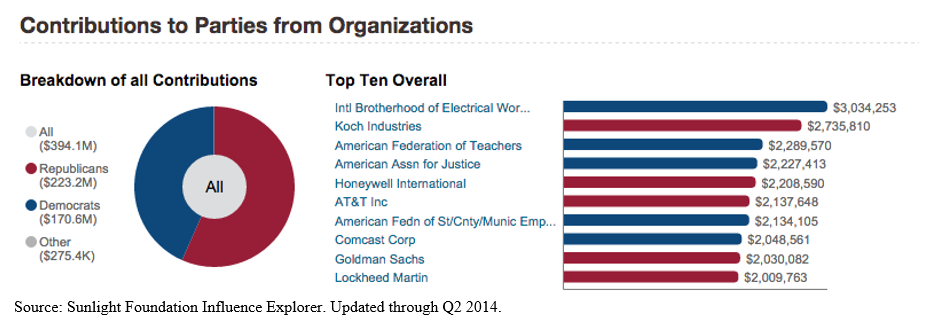Both the NEA and AFT have prioritized supporting candidates for state offices (rather than national). The NEA will focus about 70 percent of their spending on state elections, and a recent NEA memo made it a priority to defeat Govs. Tom Corbett and Rick Scott, of Pennsylvania and Florida, respectively. AFT President Randi Weingarten has said her union would focus on those races in addition to Wisconsin, Michigan, and Illinois. Spending more on state races like this is not the norm for special interest groups; clearly, the teachers unions believe that statehouses are where education policy will change in the immediate future.
Keeping Proven Friends
Both the NEA and the AFT have highlighted the importance of keeping Democrats in control of the Senate. Toward that end, the unions will support Democratic candidates in North Carolina, Alaska, Arkansas, Colorado, Michigan, and Minnesota. And they have eschewed conservative-to-moderate Democratic candidates from Kansas, Iowa, Georgia, and Kentucky who find themselves in the tightest races—in favor of backing races with progressive candidates. This suggests the union strategy is to get value for their campaign investments by protecting a few reliable allies rather than pushing for a Senate majority that relies on moderate Democrats to pass bills.
Giving All the Money to Democrats
Both groups have given more to Republican candidates in recent elections, but in 2014 teachers unions appear to have gone all-in with Democrats: Nearly all of AFT’s donations went to Democrats, and the NEA has given about 91 percent of its pot of money to them as well. This is an interesting choice given the numerous policy disagreements between the unions and key Democrats, including President Barack Obama, over teacher evaluations, standardized testing, and charter schools. But donating to Republicans would have two key political advantages for unions: (1) It would provide an incentive for Republicans to negotiate reauthorizations of several education laws, including No Child Left Behind and the Higher Education Act. It is political abuse for the Democratic party to take money and votes from teachers but not support their preferred policies. (2) A demonstration that unions are willing to support Republican candidates would also help to hold Democrats accountable for repeatedly endorsing policies that teachers oppose.
Overall, the teachers unions have adopted a smart-but-safe strategy that focuses most of their resources on defeating Republican governors who attempted to break unions. Alternatively, they could have adopted a more aggressive strategy that would have involved doing everything to keep the Senate under Democrat control. In addition teachers unions could have supported Congressional Republicans who oppose the Common Core and opposed Democrats gubernatorial candidates who support education reform, like Andrew Cuomo in New York. A bold strategy like this could draw the ire of many on both sides of the aisle. If successful, this would increase the long-term political power of teachers unions.
Instead, the actions of AFT and NEA indicate that they are looking to prevent the loss of their remaining political allies and perhaps pick off one or two GOP governors. These are safe bets that are unlikely to change the political status quo. Leaders of both parties in state capitals and Washington can point to this election as evidence that education unions will not seek widespread political retribution for a pro-education reform agenda.
Josh Bleiberg is a research analyst in the Center for Technology Innovation at the Brookings Institution. Reach him via email or Twitter.


 RSS Feed
RSS Feed